#Aboriginal and Torres Strait Islander people
Explore tagged Tumblr posts
Text

Here are some resources for the 26th of January. In such difficult times, solidarity is more important than ever. Take care of yourself and take care of each other.
Support services for those in Australia:
Lifeline 13 11 14
Kids Helpline 1800 55 1800
QLife 1800 184 527 (for Queer Australians)
Support services specific for First Nations people:
13YARN 13 92 76
Yarning Safe ’N’ Strong 1800 959 563
Brother to Brother 1800 435 799 (for Indigenous men)
#Invasion Day#Aboriginal Australia#Torres Strait Islander people#Indigenous Australia#auspol#resources#Australia#Day of Mourning#Survival Day#always was always will be
673 notes
·
View notes
Text
Skipping ALL things in my queue, and all the asks in my ask box, to tell y'all about THIS that came out a few hours ago. I cannot express how excited I am about this information finally being published.
Its not the first evidence of pottery technologies found in Australia, but the artefacts that have been found at the Lizard Island group in the past havent necessarily been datable. Evidence of pottery in the Torres Strait was also found in the early 2000s, and its been analysed to be evidence of trade with Papua New Guinea (who have an AMAZING history of pottery technology).
To our amazement, around 40cm below the surface we began to find pieces of pottery among the shells in the excavation. We knew this was a big deal. We carefully bagged each piece of pottery and mapped where each sherd came from, and kept digging.
But as of now, there's officially dated evidence for locally made pottery in Australia, of at least 1800 years. Not only outside the Torres Straight, but 300km south. Not only 1800+ years old, but also pre-dating the original known dates for Torres Straight Islands pottery, suggesting the possibility of even earlier pottery technology trade with PNG. AND ITS DECORATED.
Radiocarbon dating of charcoal and shells found close to the pottery shows that it is between 2,950 and 1,815 years old, making it the earliest securely dated pottery ever found in Australia. Analysis of the clays and tempers shows that all of the pottery was likely made on Jiigurru.
The pottery stopped at about 80cm depth, with 82 pieces of pottery in total. Most are very small, with an average length of just 18 millimetres. The pottery assemblage includes rim and neck pieces and some of the pottery is decorated with pigment and incised lines.
#GUYS IM SO EXCITED#IVE BEEN WAITING FOR THIS#archaeology#australia#Aboriginal and Torres Strait Islander peoples#this is literally SO huge#they let a mouse do archaeology?#Indigenous peoples
632 notes
·
View notes
Text
always was, always will be aboriginal land ❤️💛🖤
#dont know how many aussies follow me but its jmportant#for those who arent australia!!#today is invasion day otherwise known as australia#its a celebration of the mass genocide of the aboriginal and torres strait islander people#(the owners of aussie land)#weve also very recently lost a vote to give aboriginal people a say in what happens to that land#thankfully the protests all over the country were huge#ive just gotten home from one that had tens of thousands of people marching through meanjin#if youd like some links to support indigenous owned businesses (v important to do especially today)#feel free to dm me#australia#invasion day#australia day#jan 26th#change the date#vote yes#land back
91 notes
·
View notes
Note
Anon from earlier about Sam's family. Thanks for letting me know that tribe was an offensive term for the Aboriginal people. I'm not Australian and didn't know. I apologize. And yes, people were using that term on twitter when talking about it. It's all in very bad faith.
(x)
You're very welcome, anon, and I appreciate the acknowledgement. I figured it was probably the terminology being used, and you just didn't know, but it's really kind of you to own it, apologise and be open to learning.
I'm kind of a bit lucky in this sense, because I have a few Aboriginal and Torres Strait Islander friends from across different Nations, and I work with a lot of First Nations people in different capacities (actors, writers and artists at the theatre company, of course, but one of my areas of specialisation as a freelance writer is in people-related safety, so I have a - - mm, I don't want to say expertise, because I think this is a space you're always learning in, but perhaps an area of qualification (?) in writing about child safety, gender-based safety in the workplace, and racial and cultural safety, particularly with First Nations people, in which I usually work with Aboriginal and Torres Strait Islander peoples to develop documents on what helps them to feel safe in different contexts. I've written these sorts of things for schools, health services and arts venues, so I have a lot of conversations with people in different capacities too. I'm also on the theatre I work at's Reconciliation Action Working Group, so yes! Having a lot of robust conversations every day, haha).
But yeah. It's quite telling to me that someone would stress a level of 'care' over what happened to those First Nations people while using a term that many Aboriginal and Torres Strait Islander peoples would consider a slur. To do that level of research into a family Sam could possibly be related to, and then to weaponise a community while calling that community something they'd find derogatory just makes it beyond obvious what the intentions behind it are. It would take two minutes to look up any of the many, many guides that exist about this, but those communities aren't who they actually care about. They're just grist for the mill.
#okay typing this up to hopefully help people identify this if it comes up in further convos#especially because sam works with Aboriginal and Torres Strait Islander peoples quite a bit here (including getting directed by my beloved#Leah Purcell in The Drover's Wife! and also there being a story on newsreader#with one of my fave aus actors right now [who's half Aboriginal Australian half Black American] Hunter Page-Lochard)#some things worth noting:#the term 'abo' is the equivalent of saying the n-word#Do Not Use It and if you see non-Aboriginal and Torres Strait Islander people using it - call them out#also most Aboriginal and Torres Strait Islander peoples do not like being abbrevited generally or reduced to an acronym#the people i speak to often find the BIPOC descriptor as harmful and reducing of their Indigenity and connection to country (aka homeland)#Australia has a 'First Nations First' movement#which is about trying to put First Peoples first in discussion events (hopefully one day) politics etc#which obviously BIPOC as an acronym seconds Indigenity to Blackness#this is not a criticism of the acronym in other countries just an acknowledgement it doesn't always work here especially with#Aboriginal people who don't identify as Blak#'AATSI' and 'ATSI' have also been considered deeply DEEPLY offensive by literally anyone i have ever spoken to about terminology#so please don't do that#the best thing you can do is acknowledge a specific community nation#so let's use Leah as an example since I've just mentioned her#she's a wonderful Aboriginal Australian playwright filmmaker and actress#but she's also a Goa-Gungarri-Wakka Wakka Murri woman#which she has talked about and posted about publicly#if Aboriginal Australian people have their communities and nations in their bio's like that#you should use them and feel empowered to do so#there are over 250 Aboriginal and Torres Strait Islander communities still living in Australia#(halved from around 500 due to colonisation)#acknowledge the specific communities and nations where you can!#that said#people might refer to themselves as 'Blak' (Black without the C)#as a collective term#or just Aboriginal Australian
2 notes
·
View notes
Text
Got a booklet in the mail that's all about the upcoming referendum, and one of the points for voting no is that voting yes could lead to a "dysfunctional government"
Bitch, this is Australia. We don't even have a functional government to begin with. The batshit-auspoll blog pretty much proves that
#im voting yes obviously#for non-australians the referendum is for including our native people in our government#basically it would change our constitution to require that aboriginal and torres strait islanders always have a voice in parliament#you can guess the main type of people who dont want indigenous australians to have a say in how the country is run
14 notes
·
View notes
Text
If you are pro-Palestine and yet somehow still calling Invasion day “Australia Day”, then you aren’t actually pro-Palestine
Being against settler-colonialism and genocide isn’t ’pick-and-choose’
As OP says, no one is free until everyone is free and Aboriginal and Torres Strait Islander people continue to be marginalised and impacted by colonisation
Fuck ‘Australia Day’.
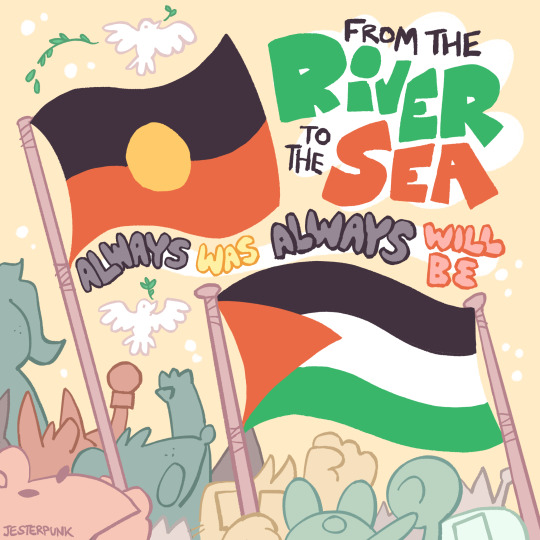
[ID: A digital painting in pastel colors showing a colorful crowd of different animals holding a Palestinian and Indiginous Australian flags, with text above them that reads, "From the river to the Sea, always was, always will be", with white doves flying next to the flags. A small artist's signature at the bottom reads, "jesterpunk". End ID.]
🕊️ every year in my lifetime, I've seen an ugly blue british flag printed on single use cups and ugly tshirts on January 26th, celebrating stolen land, stolen language and stolen children. this year in particular, I feel the need to make my politics clear through art, as the horrors of colonialism and genocide are mirrored internationally in Palestine. I want to be clear, you do not get to enjoy my art without knowing clearly what my politics are, and you do not get to ignore my politics as an inherent part of my art. no one is free until everyone is free 🖤💛❤️🇵🇸
[Emoji description: A white dove with a green sprig. A black heart, a yellow heart, a red heart, and the Palestinian flag. End emoji description.]
#always was always will be#palestine#free palestine#invasion day#blak lives matter#abolish australia day#free gaza#change the date#Aboriginal australia#Torres strait Islander People
11K notes
·
View notes
Note
Top 5 archaeological sites in Australia that you feel people should know more about? Or top 5 Australian artefacts?
I feel like I’ve talked a bit about artefacts in a few recent asks, and also I feel like a lot of Australian archaeology (and as such, sites) are very underrated, particularly on a global scale. Its often acknowledged in Australian archaeology that getting international academia to recognise the importance of our country’s archaeology is very very difficult.
While there’s a million and one sites I’d love to talk about, I’m going to TRY and give sites that relate to different aspects and locations
This is probably going to be long, so...
1. Nauwalabila, Madjedbebe (Malakunanja II), and the Deaf Adder Gorge region, Northern Territory (Aboriginal)
Rock shelters in this region, and specifically Madjedbebe, are currently the oldest location of human habitation in Australia. Dating evidence from 2017 excavations provided an estimate of earliest occupation of 50 000 years at certainty, possibly extending back as early as 65 000 (+/-6000). It also has provided a lot of evidence for research into the extensive grind stone technologies of the Pleistocene.
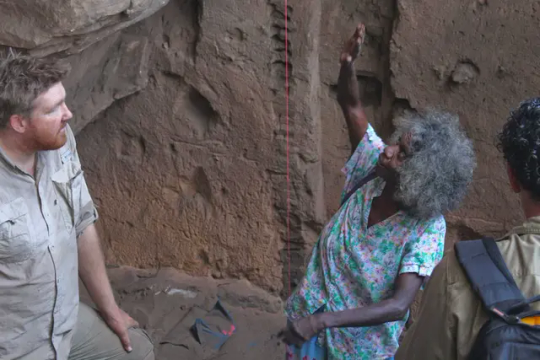
2. Cloggs Cave and the Buchan region of the Victorian Gippsland (Aboriginal)
So much research has been done into this region in various ways. Josephine Flood focused her research on Bogong Moth usage (and festivals) within this region, providing some of the earliest accepted academic research in support of Aboriginal peoples’ claims of large scale Bogong Moth Festivals in Australia’s highlands (although the fac that no one really believed communities until then…………..). In 2021 grind analysis found Bogong Moth residue, making this the earliest stone artefact with evidence of insect food remains. And in addition to that recent 2017 research in the area investigated Holocene occupation with Aboriginal community members, with a focus on understanding the interaction of spirituality with the resources found in the caves.
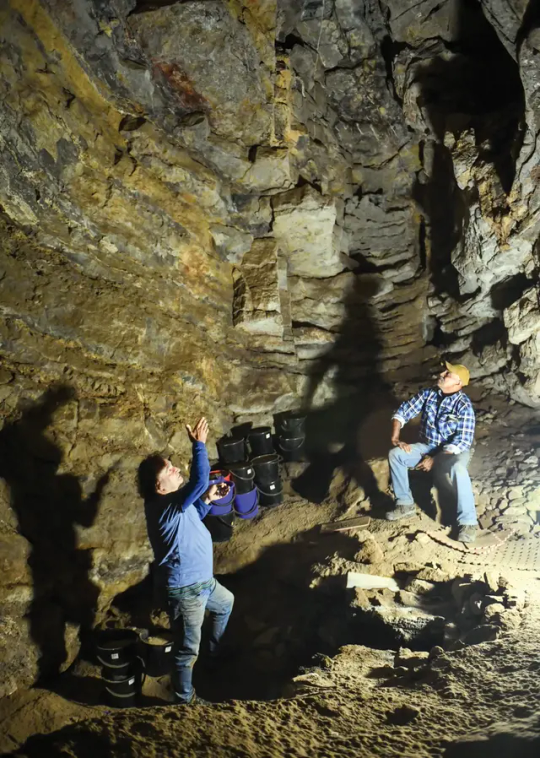
3. Mabuyag Island, Torres Strait Islands, Queensland (Torres Strait Islander)
Mabuyag Island (alternatively known as Mabuiag or Mabuyaagi) has archaeological evidence of human occupation since 7300 years ago. The island is both associated with recent religious practices associated with he heavy processing of dugong remains, and totemic associations with these, which played a role in early 2000s into community lead and directed archaeological research into ritual and religious traditions and practices. In addition to this, Mabuyag is the location of the first archaeological excavations in Australia to find pre-colonial pottery fragments. The fragments at the two sites on the island were associated with Melanesian and Papua New Guinean pottery trade. The excavations relating to pottery on the island played an important role in our understanding of domestic and international trade in pre-colonial Australia, and also formed an influence for the recent excavations at Lizard Island, 300km south, which identified the first datable domestically made pottery technology found in Australia.
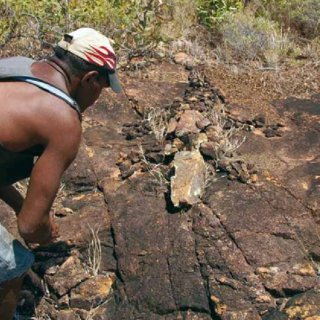
4. Hyde Park Barracks, Sydney, NSW
Hyde Park Barracks is part of a collection of colonial heritage structures in Australia, relating to Australia’s time as a penal settlement. Hyde Park Barracks in particular were the location of the housing of convict men from 1819 to 1830, with the 1830s to 1840s also involving the site being a location of additional convict punishment, and the base for the Board of Assignment of Servants. Following on from a reduction of convicts to NSW in the 1840s, the Barracks became the Female Immigration Depot, and the Orphan Institution, later becoming the Asylum for Infirm and Destitute Women.
This time period of women’s occupation provides some of the most interesting archaeological remains, as redevelopment and management of the site has found high rates of preservation within walls, and in areas below floorboards. This includes textiles and fabrics, papers, and other non-organic materials such as pipes (with their tobacco intact) stashed in what was once floor, wall, and ceiling cavities. Archaeological investigations in the area form one of the most detailed assemblages of artefacts relating to instituted women in the British Empire during the 19th century.
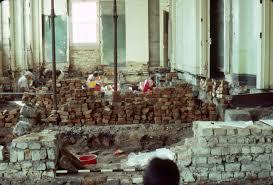

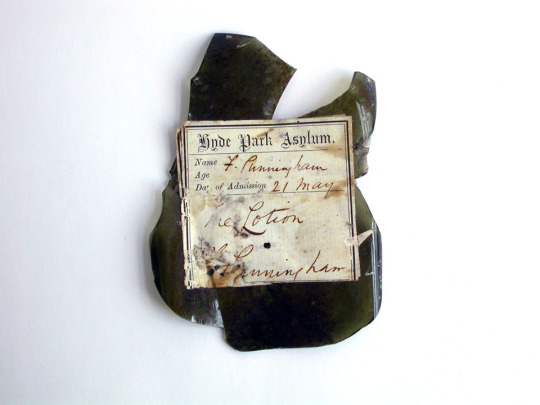
5. Notch Point, Western Australia (Multicultural heritage)
Notch Point is a site of varied and mixed archaeology, ranging from pre- and post- colonial period Aboriginal heritage, to diverse 19th century occupation of the region by Chinese, European, Malay, and Aboriginal peoples in association with pearling industries off the coast. In addition to this, the point is located on Dirk Hartog Island (otherwise known as Wirruwana), the site of the earliest European arrival in Western Australia in 1616, and contains archaeological evidence of both various early Dutch interactions with the island in 1616 and 1697, as well as French arrival in 1772, 1801, and 1818. Notch Point in particular also contains evidence of conflict between the predominantly Chinese population of the pearling industry, with white-Australian and European pearling masters, and pastoral agents. Its not a site that is widely discussed, but provides a fascinating overlay of the amount of varied cultural groups that can be present within Australia’s archaeological sites.
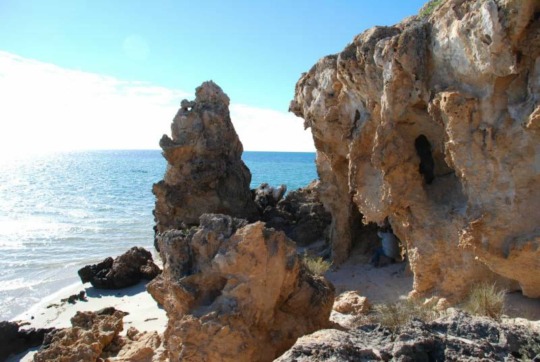
-
-
Honourable mentions to:
Lake Mungo and the Willandra Lakes which should 100% be on this list, but also I feel like I talk about it ALL the time and I wanted to mention sites that I actually don’t see discussed a lot. Theyre super important for cultural reasons, for archaeological reasons, and also for their role the development of archaeology, Aboriginal community consultation, and the role its played in developing repatriation practices in modern Australia. I have multiple posts about them HERE
Budj Bin Eel Traps in Victoria (same reasons, I’ve definitely talked about them before).
Juukan Gorge (and its destruction, im still horrified)
Harrietville Chinese Mining Village
Strangway Strings and The Peake Afghan Cameleer sites
Recherche Bay in Tasmania, and its 1792 French settlement sites
Homebush Mill & Mission Hall in QLD and Beowa National Park sites containing South Sea Islander heritage
#I feel like this constitutes a solid answer#i had fun#and hopefully people learn new things about Australian archaeology#and its diversity#sorry this took literally forever to answer#i got sick for a bit#and then its going to chill in my queue for a couple of days#archaeology#Australia#aboriginal and torres strait islander peoples#they let a mouse do archaeology?#Mice answers things
73 notes
·
View notes
Text
A reminder to anyone reading this that so-called Australia is stolen Aboriginal and Torres Strait Islander lands, that we never ceded sovereignty to our colonizers. So called Australia is the only "Commonwealth" country that has never had a treaty with First Nations peoples. Only two years ago the government held a referendum to determine whether we, the sovereign peoples of this land, should have an advisory body in government and the nation voted no. So called Australia is the only nation that celebrates on January 26, the anniversary of the beginning of the attempted colonisation and genocide of its First Nations peoples. If you are not Aboriginal or Torres Strait Islander and you're living in so called Australia, you benefit directly from our colonisation and it's your duty to stand with us. Aboriginal and Torres Strait Islander people are the most incarcerated people by percentage on Earth. We are also the oldest living, continuous culture known to humankind. For 100s of 1000s of years our Mob stood beautiful, Blak and deadly and we will continue to do so because this always was and always will be our lands. We are still here.
8K notes
·
View notes
Text
Was going to reblog without commentary but actually-
The thing is that Aboriginal and Torres Strait Islander peoples have thrived in so called “Australia” for millenia- the largest estimates I’ve seen are for more than 100,000 years. They are, I believe, the oldest living culture in the world, with oral histories that stretch back to well before any of Europe’s “ancient” history.
And First Nations people were able to do so because they had profound respect for the country they belonged to. (And “country” here refers to the land they belong to, not a nation state).
Colonisers came to so called Australia and tried to treat it like their own, and then blamed the land and the peoples for being “uncivilised” and “dangerous” because it was different. And their lack of respect for this land meant they died sometimes because they didn’t listen to the peoples who had lived here for millennia.
Instead, they brutally subjugated the land and Aboriginal and Torres Strait Islander peoples and have never stopped. And the land and her peoples continue to suffer from the lack of respect and the expectation that the land should be like that in Western Europe.
okay I’ll say it nicer:
australia was colonised according to the myth of terra nullius (or empty land). ever since the very early days of colonialism, the land has been framed as something untameable and unliveable. this has justified acts of violence against the first peoples here, in that they are seen as non-people. it has justified the destruction of sacred land in the goal of making australia look more european. (an example: our capital city contains a man-made lake that is now nothing better than a fetid carp pond. it’s disgusting and unnatural). basically, the idea of “taming australia’ has justified endless harm
“everything in australia is weird and dangerous” is not just some silly meme phrase, it is something that arcs back to the very beginning of white settlers laying claim to ‘australia’. and personally I am very sick of seeing it thrown around like it means nothing
#I am a white australian person#or a settler#I have made these jokes before without interrogating them#but they are harmful#I won’t be doing so again#obviously I can’t talk for Aboriginal or Torres Strait Islander peoples#so please correct anything I’ve said if I’m wrong
32K notes
·
View notes
Text
i feel like every country has That Holiday That Can’t Be Referred To because there are such widespread, polarised views on its significant and history that using any name for it will cause you to spontaneously combust.
Australia’s is [~̴͍̙͈͈͕̝̜̹̓͛ͅ|̸̢̥͎̜͔̞̘̩̙̲̞̜̤̦̗͓̬͔̻̗̤̰͘^̷͖́͋̈́̌̈́̉͐̽̀̉̓͌̓̎̂̔̂͋̈̂͘͘̚͘͘͝€̵̛̫̭̂͗̀̆͐̋̽̃̽̓͂̊͆̒̀̈́̅͑͆̚̚̚͘͝͝ͅ~̶͎̤͈̦̬̩̦͍̯̤̬̳̙͔̺͖̜̗̫̮̲̯̠̝̗͉̄̂̓̈̌͐͐̚͜ͅ_̵̨̩̻͓̼̰̑͋͋̑͛̀̀͛͆̅̈̇́̚ͅ•̸̧̨̢̪̮̖͙̮̲̬̟͕̖̗̻̯͙̖̞̮͍̳̣̠̬̽̾͝͝ͅ’̶̢̨̢̳̼͕̞͖̪̥͔̱̩̤̱̣̤̘̠͎̳̻̰͉̪̎͗̀̂͑̒̇͒̃̀̇̎͌̀̕͜͜ͅi̴̝̰͖̞̘̟̊͆͗͋̾̾̓̉̍̌̈́̔̈́͑̽͗̽̾̈́͘͜͝ ̶̢̛̛̻̫͈̩̳̟̝̬̰̮̝̖̩͓̜̼͇̗̿̄͂́̊̽̃̀̄̓̅̆̀̈́̐͆́̾̓̀̊͐́̚ ̷̡̢̹͇̘̣̺͕̦͔̱̰̂̑̉͐̑͒͂̃͗͐̆̌͆͒͋̚͝͝ͅͅ-̸̢̛̛̰̥̭͔̭̬̤́͌͑͌͑͐̕ͅ;̴̨̡̪̙͎̞̻̩̝̝̬͎̣̮̠͆͒̈̾̓̑̅͆͂ͅ’̴͓̞̪̯͚͔̠̞̳̬̱̜͔̩̄̔́̔̐̌̋̃̌̎͘͘͝] on jan 26th what’s yours
#cause like#i’ve heard so many different aboriginal and torres strait islander opinions#which makes total sense. bc indigenous people are individuals (wow shocking)#but also makes it hard to know what to do?? so it’s now non-existent#politics#???#idk
0 notes
Text
In 1937, Winston Churchill said of the Palestinians, I quote, “I do not agree that the dog in a manger has the final right to the manger even though he may have lain there for a very long time. I do not admit that right. I do not admit for instance, that a great wrong has been done to the Red Indians of America or the black people of Australia. I do not admit that a wrong has been done to these people by the fact that a stronger race, a higher-grade race, a more worldly wise race to put it that way, has come in and taken their place.” That set the trend for the Israeli State’s attitude towards the Palestinians. In 1969, Israeli Prime Minister Golda Meir said, “Palestinians do not exist.” Her successor, Prime Minister Levi Eschol said, “What are Palestinians? When I came here (to Palestine), there were 250,000 non-Jews, mainly Arabs and Bedouins. It was a desert, more than underdeveloped. Nothing.” Prime Minister Menachem Begin called Palestinians “two-legged beasts”. Prime Minister Yitzhak Shamir called them “grasshoppers” who could be crushed. This is the language of Heads of State, not the words of ordinary people.
Arundhati Roy, ‘Our country has lost its moral compass’, Hindu
#Hindu#Arundhati Roy#Winston Churchill#Palestine#Native Americans#USA#Australia#Aboriginal and Torres Strait Islander (First Nations) people#Golda Meir#Levi Eschol#Menachem Begin#Yitzhak Shamir
14 notes
·
View notes
Text

For some in Indigenous Australia, reconciliation can never be revived.
(ABC News: Emma Machan)
Is reconciliation really dead after the Voice to Parliament was voted down?
By Indigenous Affairs Editor, Bridget Brennan
ABC News Australia - 22 October 2023
•
•
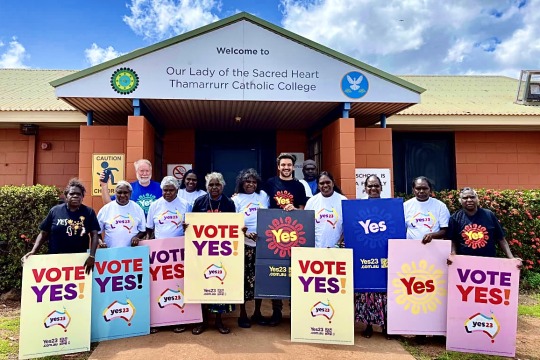
Indigenous leaders who campaigned for Yes have released a statement pledging to fight for justice.
(Supplied)
‘Shameful victory’: Indigenous leaders’ bitter lesson from Voice campaign.
By Mike Foley
The Age - October 22, 2023
•
•
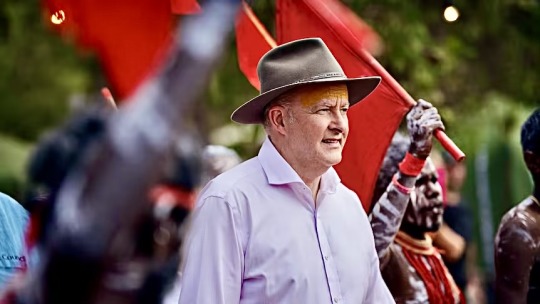
Indigenous leaders have written an open letter to Australia’s Prime Minister Anthony Albanese after the Voice referendum was defeated.
(ABC News: Michael Franchi)
Indigenous leaders break their silence, call referendum defeat 'appalling and mean-spirited'.
By Indigenous Affairs Editor, Bridget Brennan
ABC News Australia - 22 October 2023
•
#Australian Indigenous (Aboriginal & Torres Strait Islander) peoples#Race relations in Australia#Indigenous policy & reconciliation in Australia#Democracy & social justice in Australia#Australian Indigenous Voice to Parliament referendum 2023
1 note
·
View note
Text
Australians please vote YES.
HOWEVER, the original post is WRONG about what the referendum is about.
It does not mean that Indigenous people will get a guaranteed spot in parliament. It's not about that. The referendum question is:
A Proposed Law: to alter the Constitution to recognise the First Peoples of Australia by establishing an Aboriginal and Torres Strait Islander Voice. Do you approve this proposed alteration?
The new chapter and section to be added to the constitution are:
Chapter IX Recognition of Aboriginal and Torres Strait Islander Peoples
S 129 Aboriginal and Torres Strait Islander Voice
In recognition of Aboriginal and Torres Strait Islander peoples as the First Peoples of Australia:
There shall be a body, to be called the Aboriginal and Torres Strait Islander Voice;
The Aboriginal and Torres Strait Islander Voice may make representations to the Parliament and the Executive Government of the Commonwealth on matters relating to Aboriginal and Torres Strait Islander peoples;
The Parliament shall, subject to this Constitution, have power to make laws with respect to matters relating to the Aboriginal and Torres Strait Islander Voice, including its composition, functions, powers and procedures.
Source and more info
For all my fellow Aussies remember, voting yes in the referendum quite literally means that Indigenous Australians will get a proper spot in parliament. If someone tells you to vote no they are racist, there is no reason why Indigenous Australians shouldn’t be allowed in parliament.
Vote Yes!
#auspol#aboriginal and torres strait islander voice#spreading wrong information when urging people to vote yes only helps the no campaign's fear-mongering
26K notes
·
View notes
Text
The leaseholders of Wave Hill Station have been convicted and fined $250,000 for damaging relics at the heritage-listed Wave Hill walk-off site.
The station was the site of a historic walk-off by Gurindji stockmen in 1966, a moment that sparked the Aboriginal land rights movement.
...
Lawyer for the NT government's Heritage Branch Michael McCarthy ... said the windmill and fence line were two of "very few structures" left which demonstrated how the station looked at the time of the walk-off, and said both remained important to traditional owners.
"This is one of the most significant heritage places in the country and in the face of clear risk to it, the defendant failed to take obvious and inexpensive steps to avoid that risk," he said.
Mr McCarthy also referenced a statement from a Gurindji elder who expressed "anger and disbelief" about damage to the site, as two representatives for the Gurindji people sat in court.
#this is such a disappointing thing to have happened#its such an important site for Indigenous land rights in australia#and recognised to be significant to the Gurindji people#and Australia at large#the willingness to actually enact heritage laws is a very small mercy and a very low bar#yet thats the point were at with heritage and respect of Indigenous peoples their sites cultures and values currently though#Australia#Aboriginal and Torres Strait Islander peoples
14 notes
·
View notes
Text
It’s been a while since I’ve actually introduced myself, so might as well take this as an opportunity, so thanks Reid!
I’m Mice/Mouse to most - your neighbourhood Australian archaeologist!
My blog primarily focuses on random archaeology things I come across that I find interesting - come ask me questions about things, I’m always keen for a chat and to help people learn about archaeology, Australia, and our extensive history!
I work in Australia in consulting archaeology (CRM as I think it’s more commonly referred to in the US), primarily with Aboriginal archaeology.
My specialty when I studied was in Australian multicultural heritage, which I wrote an entire thesis on, and am regularly tempted to return to. If you ask me, or I get the whim, it’s incredibly easy to get my to gush about it.
Calling all archaeoblurs!
If you're an archaeologist* and have a Tumblr, reblog this or sound off in the comments! I figured it's high time we put together a directory of sorts.
*for our purposes, archaeologist can mean someone who has or is working on a degree in archaeology, you don't necessarily have to be currently practicing. If you have a blog that is specifically archaeology focused, include that and what your specialty is!
#I will absolutely participate in this directory#a genius idea Reid#archaeology#they let a mouse do archaeology?#Aboriginal and Torres Strait Islander Peoples#Australia
749 notes
·
View notes
Text
The Voice, The Vote
The Voice Referendum in Australia will come to a vote on October, creating an Indigenous Voice to Parliament. Approximately 3.8% of Australians today are indigenous, a group which lumps together both the native Aboriginal people of the mainland, and the Torres Strait Islanders, who come from islands off the northeast coast. According to the Australian Bureau of Statistics, their numbers are…

View On WordPress
#aboriginal people#Australia#parliament representation#political representation#the voice#torres strait islanders
1 note
·
View note